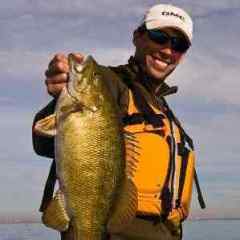I think an important distinction needs to be addressed here: alternative methods of propulsion are not for everyone. While the Native Mariner and Hobie Mirage Drive kayaks are not for everyone, they do offer unique and distinct advantages to the angler who prefers to move often, has long open water to cross or has a medical condition that precludes them from extended paddling sessions. I fall into the last two categories with the last reason being most prominent. I have tendonitis in one shoulder, and a damaged labrum in the other. While I use to paddle for periods of 5-6 hours at a time over the course of a day on big reservoirs, it was murder on my shoulders the next day. Often times I would even have trouble sleeping because of it.
As flyfisher pointed out earlier with the movement differences on the drive systems between the Native and the Hobie, there are also disadvantages to both drive systems. While the Mirage Drive may create additional pressure on your lower back, that most often times is due to improper seat adjustment and Mirage Drive pedal distance adjustment. Most people sit too upright and have the pedals adjusted too close believing they need a long reach of their leg to move the kayak. Nothing could be further from the truth. In fact, movement of the pedals on a Mirage Drive kayak a mere 2-3" will propel the kayak, the Native still requires a full revolution to move the kayak. The movement required for the drive is on a lateral/horizontal plane and is less stressful/more natural movement on your knee and ankle joints over the course of the day on the water.
As far as the Native in concerned, the challenge with that drive system is that it is a recumbant drive meaning that your knees, hips, legs and ankles are all utilized which for some individuals can be difficult over the course of the day and can actually place more strain on your knees over the course of time if not executed efficiently and properly, just like riding your bike. The are also three huge differences between the form and function of the drive systems when compared to one another.
First and foremost, the drive system on the Native is a fixed mast system and has no flex, meaning that in shallow water situations where the mast can bottom out, the drive is not as useful, because it protrudes from the bottom of the kayak over 6". For the Mirage Drive, the fins can be opposed to one another and not require removal in water that is 12-16" deep, and the drivehousing only protrudes a little over 1" from the bottom of the hull. Second, in shallow water, the Mirage Drive fins can still be utilized by performing a fluttering action of your feet on the pedals that will still propel the kayak. The Native is not able to execute this maneuver due to the fixed mast. Third and most significantly, pedaling efficiency is not equivalent between the two drive systems. The Native has a fixed propeller size and does not increase your speed significantly with a fast pedaling action. In fact, you will tire out and risk injury to yourself in trying to do so. A rapid pedaling action in the Native also increases the noise resonance of the hull, because the drive system actually vibrates and creates a loud humming/grinding sound. The drive was never designed nor intended for that type of usage. The Mirage Drive system is easier on your lower body and more efficient as you increase the speed of your pedaling. The fins of the Mirage Drive are based upon the physics of penguin flippers and will flex as you increase your speed. I used my Elite 5 DSI this past summer and tracked my speed on my Revolution 13 and was able to maintain a speed of 5 mph for 35 minutes straight with a nice steady cadence in my pedaling action. I left a fellow kayaker using a Mariner in the dust, because the drive system could not rotate fast enough to keep up with me. Remember, the Native is a single gear, not like a 10 speed where you can change sprockets and gears to get more power.
However, it important to understand this overlying principle here regarding these kayaks and shallow water. If you are in either of these types of kayaks, you can simple pull both drive systems and paddle the kayak just like a normal kayak. It all boils down to the types of water you want to fish and whether these types of kayaks are ones to consider. It should also be noted that while I am a member of the Hobie Fishing Team and support their brand, I am good friends with a couple Native reps in my area and have spent time in most of their models, including the Mariner. I can tell you from personal experience, the Mirage Drive system is more efficient and less stressful on your joints.
In the end, seat time, physical limitations and your overall safety and comfort are the key factors in making the decision. Listen to your "body" and then go ask your spouse for the funds !



